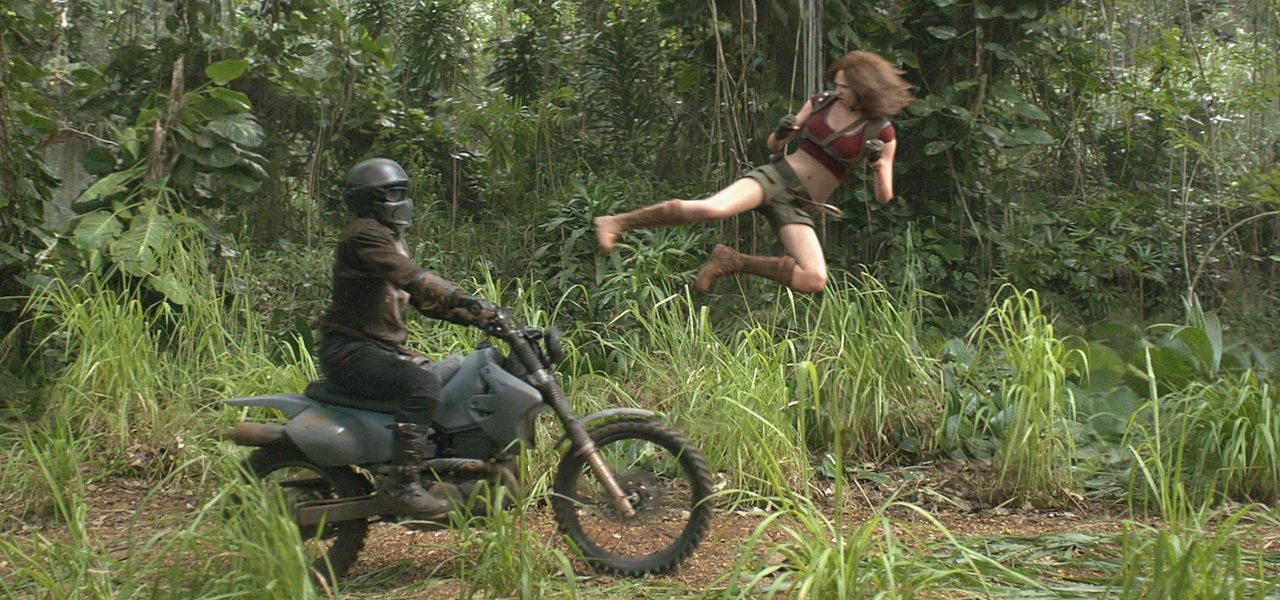
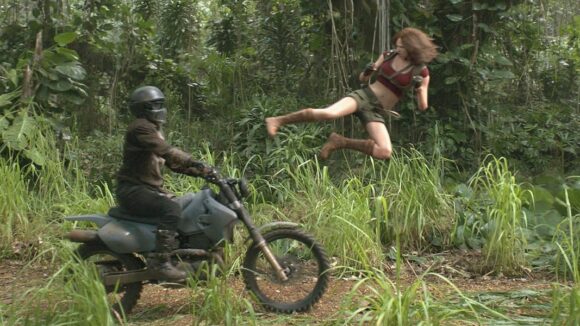
‘Jumanji: Welcome to the Jungle’: More Than Just CG Creatures
More than 20 years ago, Joe Johnston’s Jumanji delivered audiences a fun adventure story full of jungle animals, including those created with cg technologies that were still in their relative infancy.
Now, a sequel of sorts to the original film is hitting screens with Jumanji: Welcome to the Jungle. This time around, a group of high schoolers are transported into the world of Jumanji (via electronic means rather than a board game) and again encounter a myriad of creatures.
Although the original film is well remembered for its groundbreaking cg imagery, the filmmakers in this new Jumanji not only had a myriad of creatures to create, but a raft of other visual effects to pull off, too. Overall visual effects supervisor Jerome Chen explains what was involved to Cartoon Brew.
Featured creatures
Audiences quickly learn what’s in store for them once the main cast arrive in Jumanji. Here, Jack Black as Professor Sheldon Oberon, is almost immediately eaten by a hippo (a cg creature by Rodeo FX). But being in a game world, Oberon and the other characters soon learn they have three lives. Still, the eating scene had to be comical and not horrifying.
“It was an interesting experimentation in animation to determine the threshold between something that’s funny and then something that just becomes rather grotesque,” said Chen. “We discovered that, in this case, faster was funnier. So even though it may not look totally real because of the speed at which the animal is moving, the versions where he was a little bit slower in terms of taking Jack and chewing him, were much more grotesque when it was too slow.”

Similarly, the film’s villain, John Hardin Van Pelt (Bobby Cannavale), has developed the ability to control several nefarious creatures of Jumanji, including creepy crawlies. These appear from out of his mouth, and he even uses them to kill others. Again, Rodeo FX was responsible for this cg work. “We went for definitely the creepy factor in that scene,” said Chen, “making sure that a spider crawling into your shirt and a centipede crawling into your ear that that was as uncomfortable as possible for the audience to watch. If we could get our crew watching it to cringe, then we knew that it was the right amount of resistance.”
An encounter with a snake – which the characters initially try to outwit in a staring contest – made use of an on-set stand-in puppet by Legacy Effects and final cg animation from Rodeo. Again, Chen says the the scene was always about the characters and not so much about the digital creature.
“In that scene, and this goes for the entire movie. instead of it being about hundreds of creatures or dozens of snakes, it’s clean and it’s focused, and it’s about a single snake and our heroes have to come together to overcome this one particular animal,” said Chen.
“Snakes in themselves are rather challenging to light because they really have a very odd skin texture that can look rubbery unless you get the right sort of combination of sub-surface and refractivity on it,” added Chen. “I found them surprisingly difficult; it took a lot of iterations to get that particular snake to look right.”
Surprising VFX challenges
More creatures make up the final third act, including a horde of albino rhinos created by Iloura, and jaguars, an elephant, and more snakes crafted by MPC. Meanwhile, Chen had a diverse set of other visual effects obstacles. One was depicting Dwayne Johnson’s character riding a motorcycle up a massive jaguar statue.
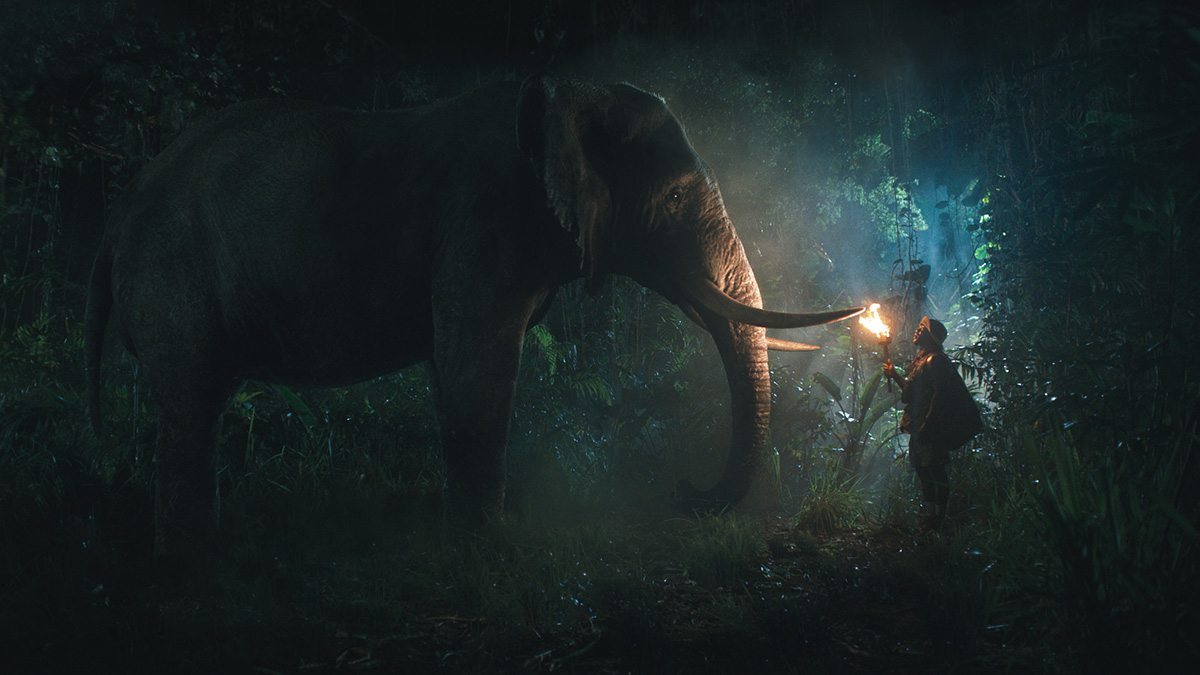
“The close-up reactions were shot with Dwayne Johnson on a greenscreen stage, and the motorcycle was placed on a motion base, so it could be pitched at a 20 degree angle, since the motorbike was ascending up the spine of a jaguar statue,” explained Chen. “For the wide angles of the bike traversing through the rocky terrain, we shot that in California, in Santa Clarita. We had a professional motorcross biker ascend this almost 50 degree angle hill. We made up obstacles for him to ride, to zig-zag through. And then later, MPC basically matched me and roto-ed this rider out of that plate and placed it into a full cg environment and made it for the appropriate time of day.”
A few other visual effects challenges also awaited the filmmakers. To move in and out of the game, the characters disappear into a complex particle effect. This was accomplished by Iloura and designed to be as organic as possible.
Said Chen: “Even though it’s touted as a video game, it’s not actually an electronic environment that the kids are being drawn into. The Jumanji game is magical and made out of more tactile types of visuals, so we wanted it to feel like the colors and the parts of them, of the kids, are being pulled into the game in a very organic way. It looked like sand, where you actually could reach out and touch it, with a minimal amount of electrical glowing type stuff.”
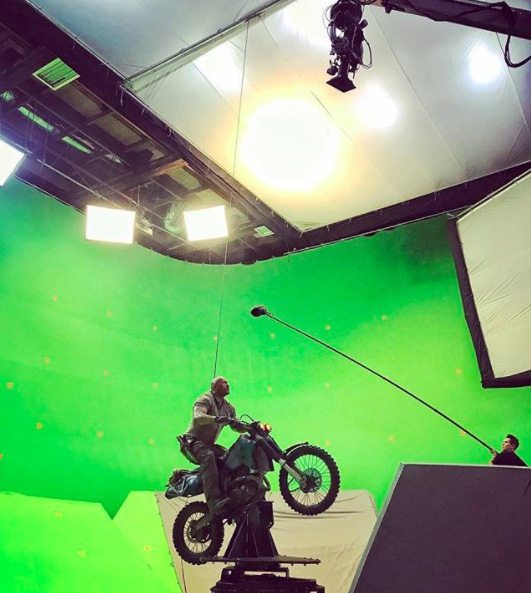
When the characters first arrive in Jumanji they soon realize they are game characters with strengths and weaknesses. Ultimately, they find a way to display these as hovering title cards. What might have been considered a relatively simple vfx affair turned into some interesting design discussions.
“The idea was to make them low tech, but what’s interesting is there was a lot of debate just among the designers about whether they should be holograms or floating text,” said Chen. “Rodeo did the design for them. We basically did a bunch of explorations, and just a simple block, just a simple slightly reflective board with raised embossed text on it was what we came up with.
“In the audience screenings, we tried multiple versions,” continued Chen. “This version was the clearest, in terms of storytelling, about what the information was. Anytime we got fancy, it was harder to read and people got confused. So we went with something very simple and just gave a little bit of visual nuance, in terms of it being slightly reflective, but not detracting from the information.”
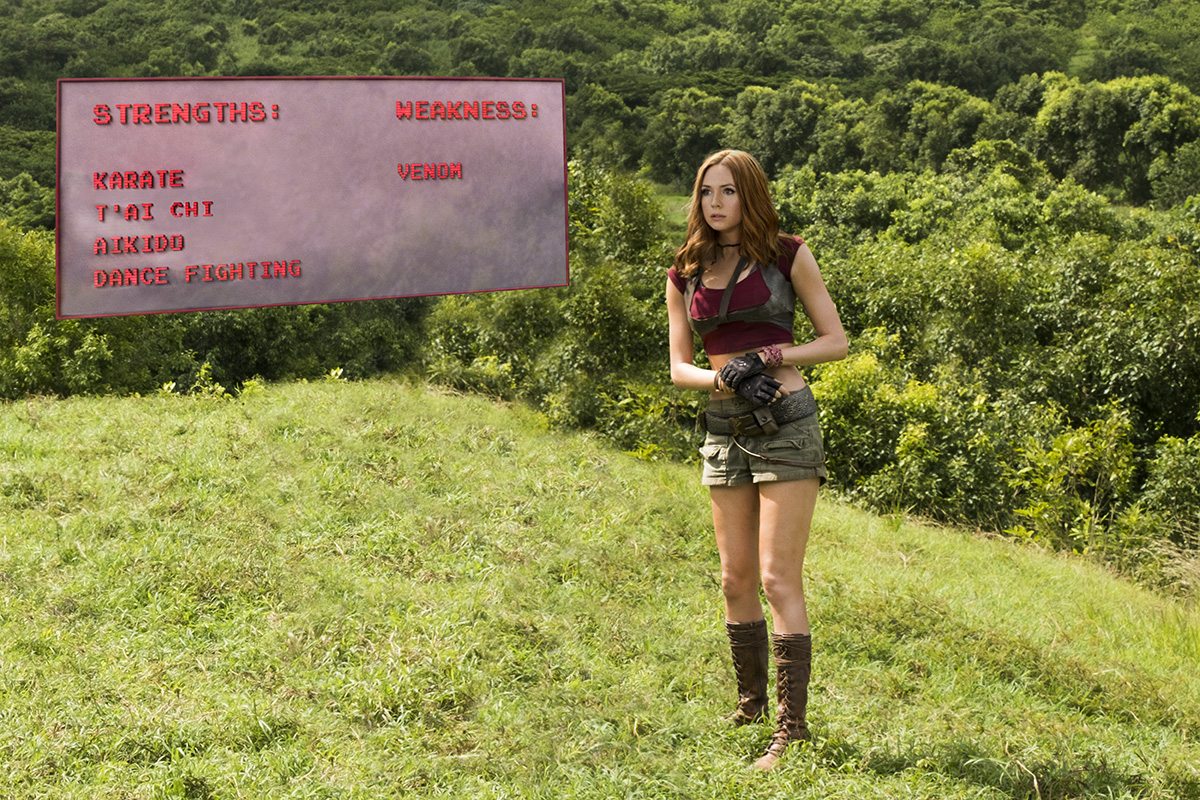
At various points in the film, the characters also use up their game lives (of which they have three). This means there were a number of death – and re-birth – sequences to tackle, which visual effects was a big part of. The idea was to always make them funny, but painful. In re-entering the game, the characters would typically fall from 1000 feet, which usually elicits a laugh from the audience.
“The only place where we really wanted to get edgy and disturbing was Karen Gillan’s death,” noted Chen, “where she compresses into a ball of flesh and explodes. It’s another one of those cases where you’re experimenting with color and texture to make sure that it doesn’t look too organic and too grotesque, and just enough feeling of something disturbing to give it an edge, but not alienate the audience.”
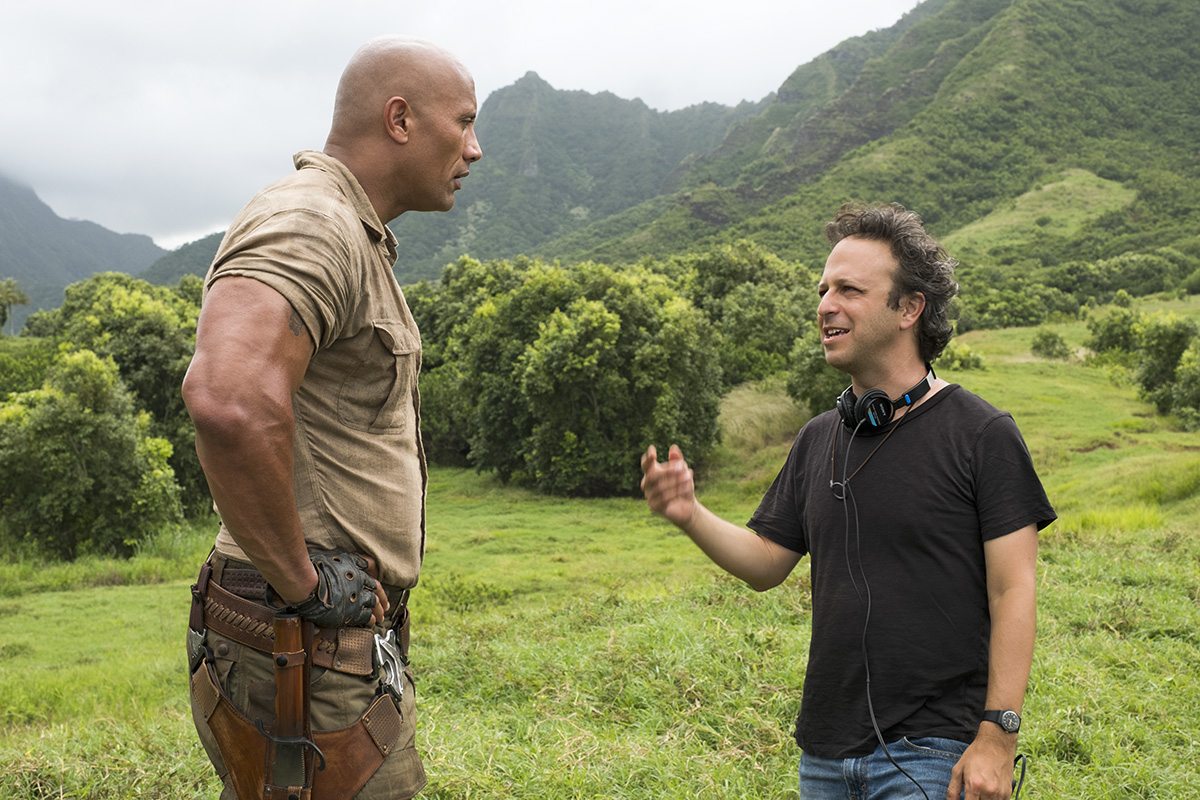

.png)